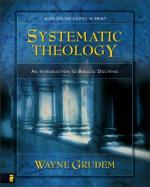|
This section contains 4,162 words (approx. 14 pages at 300 words per page) |

|
Religious discourse has been under scrutiny since ancient Greece when Anaxagoras said if oxen and dogs could paint, they would depict the gods in their own likenesses. The Jewish, Christian, and Muslim scriptures depict the divine being in vivid humanlike traits while conveying the divine otherness, mystery, immateriality, and eternity. Thus there are religious currents of anthropomorphism, of transcendentalism, of metaphor and symbolism, and of literalism about the being and nature of God. The Greek philosophical ancestry of Western culture presents the divine as immaterial, immutable, everlasting, perfect, and incomprehensible. Both the Platonic and Aristotelian metaphysicians developed theories of analogical predication that were later extended to theology, the study of the revealed divinity.
Theologians used a theory of analogy that had three parts: analogy of being (of reality between God and world, and among created realities, too); analogy of meaning (of words and concepts...
|
This section contains 4,162 words (approx. 14 pages at 300 words per page) |

|


